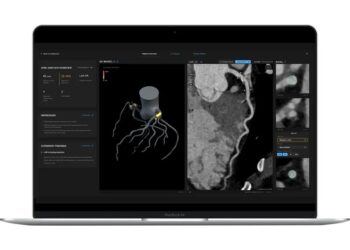# The Great Unbundling: Why Smaller, Specialized AI is the Next Frontier
For the past few years, the AI landscape has been dominated by a single narrative: scale. The race to build ever-larger, more parameter-heavy foundation models has been the industry’s north star. We’ve been conditioned to believe that bigger is unequivocally better, and to be fair, the breathtaking capabilities of models like GPT-4, Claude 3, and Gemini seem to validate this approach. They are the AI equivalent of a massive, multi-purpose Swiss Army knife—incredibly versatile and powerful.
But a quieter, more pragmatic revolution is underway. While the giants battle for supremacy in general intelligence, the next wave of value is being unlocked by a different strategy: unbundling. We are entering an era of specialized, “boutique” AI models, and for many real-world applications, they are proving to be faster, cheaper, and more effective than their monolithic counterparts. This isn’t a rejection of large language models (LLMs), but rather a maturation of the ecosystem.
### The Limits of a Monolithic Approach
The “bigger is better” paradigm comes with significant and often prohibitive trade-offs. As an industry, we’re becoming acutely aware of them.
* **Inference Cost & Latency:** Running a multi-hundred-billion parameter model is an expensive proposition. Every API call has a tangible cost, and the latency can be a deal-breaker for real-time applications. A user-facing feature that takes several seconds to return a response is often worse than no feature at all.
* **The “Jack of All Trades” Problem:** A general-purpose model is trained on the vast expanse of the public internet. While it can write a sonnet about a database schema, it lacks deep, nuanced expertise in any single domain. It doesn’t know your company’s internal jargon, your specific codebase, or your proprietary documentation. Its knowledge is a mile wide and an inch deep.
* **Data Privacy & Security:** For any enterprise dealing with sensitive data—be it financial, medical, or legal—sending that information to a third-party API is often a non-starter. The need for on-premise or virtual private cloud (VPC) deployments is paramount, and running a massive foundation model in such an environment is technically complex and financially daunting.
### The Power of Specialization
This is where smaller, specialized models shine. Instead of trying to boil the ocean, they are designed to excel at a narrow set of tasks. The key isn’t building a model from scratch, but leveraging the power of pre-trained open-source models (like Llama, Mistral, or Phi) and fine-tuning them on domain-specific data.
Consider these scenarios:
1. **A Legal Tech Firm:** A 7-billion parameter model fine-tuned exclusively on a corpus of legal contracts and case law will outperform a 1-trillion parameter generalist model at tasks like contract review, clause identification, and risk analysis. It will be faster, significantly cheaper to run, and can be hosted securely in a private environment.
2. **A Software Development Team:** A model fine-tuned on the company’s entire codebase can provide hyper-relevant code completion, explain internal APIs, and help onboard new engineers with an accuracy a general model can’t match.
3. **A Customer Support Platform:** Fine-tuning a model on years of support tickets and product documentation creates a chatbot that provides instant, accurate answers, understands product-specific issues, and can escalate complex problems with full context.
Techniques like LoRA (Low-Rank Adaptation) have made this process more accessible than ever, allowing teams to “teach” a base model new skills without the astronomical cost of a full retraining run. This isn’t just a cost-saving measure; it’s a strategic advantage that yields a superior product.
### The Future is a Mixture of Experts
The end-game isn’t an either/or choice between large and small models. The future is a heterogeneous system, much like the microservices architecture that replaced monolithic software applications.
We are heading towards a “Mixture of Experts” (MoE) architecture at the application level. An intelligent orchestration layer will act as a router, directing a user’s query to the most appropriate model for the job. A simple sentiment analysis task might be routed to a tiny, lightning-fast classifier model. A request to summarize a document might go to a mid-sized, fine-tuned model. Only the most complex, open-ended creative tasks would be sent to a state-of-the-art foundation model.
This approach offers the best of all worlds: optimized cost, low latency for common tasks, and access to powerful general intelligence when needed. The focus shifts from finding the one model to rule them all to building a smart, efficient system of interoperable specialists. The true innovation won’t just be in the size of our models, but in the intelligence of our architectures.
This post is based on the original article at https://techcrunch.com/2025/09/17/nvidia-ai-chip-challenger-groq-raises-even-more-than-expected-hits-6-9b-valuation/.






















